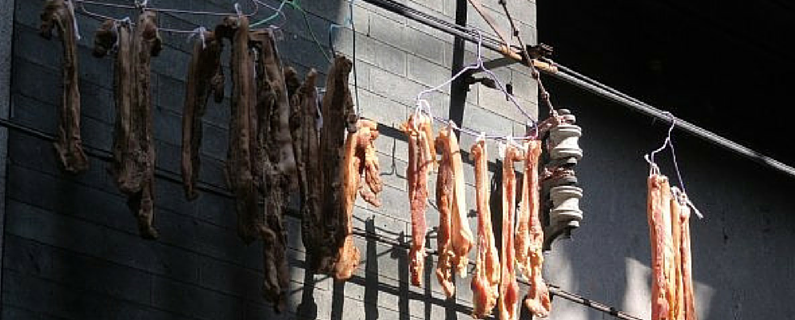For Australian farmers who want to expand their exports to China, the China Free Trade Agreement (ChAFTA) promises even more opportunity than they previously enjoyed. China is already Australia’s biggest agricultural trading partner, receiving more than AU $9 B worth of agricultural products in 2014-2015 alone. ChAFTA went into effect on December 15, 2015. It opens Australia’s goods and services to the wealth of Chinese markets previously closed while reducing tariffs and easing regulations.
Immediate Benefits
The two countries didn’t waste time getting down to business. Just five days after ChAFTA”s date of entry into force, tariffs on Australian exports to China of animal feed, oats and frozen prawns were completely eliminated. December 20 marked the elimination of tariffs on barley and sorghum exports, and those on live cattle exports from 10% to 8% (and further cut to 6% on January 1, 2016). The value of the barley and sorghum exports was worth almost AU$1.5 B in 2014-2015. The terms of the Agreement will phase out tariffs on many agricultural products altogether over time.
Reduced Tariffs Moving Forward
The relatively small percentage of arable Chinese land will require the country to purchase increasing amounts of foreign agricultural products to feed its growing population. The Australian Bureau of Resource Economics and Sciences believes that China will consume as much as 43% of the world’s agricultural exports by the year 2050. With that in mind, ChAFTA has built into it reductions or eliminations of duties on Australian farm goods over the next 11 years, with most being complete much earlier:
Dairy products:
– Ice cream, lactose, milk albumin, casein, and infant formula will see their 15 percent tariff eliminated by January 1, 2019.
– Liquid milk, cheese, yogurt, and butter will be free of their ten to 15 percent tariffs by January 1, 2024.
– the 10 percent tax on milk powders will be gone by January 1, 2026.
Meats:
It will be much less expensive to export of beef, sheep and goat meat products across the Chinese border:
– Beef will continue to grow in popularity within the Chinese markets and is expected to be the fastest growing import sector in that country. In 2014-2015, Australian beef exports to China were valued at AU $758 M, which represented 40% of all of China’s beef imports. Tariffs on beef products, ranging from 12 to 25 percent, will be eliminated in their entirety by January 1, 2024.
The 12 percent tariff on beef offal will be gone by January 1, 2022.
Additionally, China has set a “safeguard” on the volume of beef imports (not including offal) when their level exceeds 170,000 tonnes annually. Expansion of the level is available, however, and the trading partners have agreed to discuss its removal in the future.
Pork
Current tariffs on pork products of up to 20 percent will be gone by January 1, 2019.
Goat, Lamb and Mutton Meats
Competition with New Zealand’s sheep industry has always been challenging to Australian farmers, as NZ is currently China’s largest lamb and mutton country origin. ChAFTA will help to close that gap by eventually eliminating the taxes Australian’s pay to ship their sheep products to China. These fees range from 12 to 23 percent and because the 2014-2015 Australian export volume was worth AU $359 M, the tariff expense was considerable. As of January 1, 2022, the 18 percent duty on frozen lamb and mutton will be gone, and by January 1, 2023, so will the tax on other forms of sheep meat as well as the 20 percent tax on goat meat.
Wool
China currently receives a full 73 percent of all of Australia’s wool, which represents Australia’s share of 63 percent of China’s wool market. Although China’s agreement with the World Trade Organization (WHO) permits as much as a 38 percent tariff on wool imports, the country now sets that tariff at just one percent for all importers. For Australian wool exporters, ChAFTA creates an exclusive “Country Specific Quota” (CSQ) of 30,000 tonnes of clean wool with no duty owed at all (43,000 tonnes of greasy wool). The CSQ will grow by five percent each year up to 44,324 tonnes clean by 2024.
Wine
Like the rest of the world, China enjoys drinking Australian wines and spirits. However, because of China’s Free Trade Agreements with Chile and New Zealand, wineries from those countries have received preferential treatment, and shipping costs including tariffs have been prohibitive for Australian winemakers. ChAFTA eliminates those 14 to 20 percent tariffs on wine imports, and the up to 65 percent taxes on other alcoholic beverages and spirits by January 1, 2019. Austrailian wineries will have a much stronger market position without the additional export costs.
As the terms of ChAFTA are met, both China and Australian industries will benefit from improved relations and reduced trading costs. For Australia’s agricultural industries, those benefits promise to be huge. To discuss how CHAFTA will improve your agricultural enterprise, contact me today.
If you are interested in knowing more about China, download the first free chapters of my book, Red Flag – Your Guide to Risk Management when Buying in China here.



